Even if you don’t know this plant by name, you’ve almost definitely seen plantain growing in the wild before! Typically dismissed as a weed, plantain has a long history of use as a healing plant, often called “nature’s band-aid.” From varieties of plantain to its edible and medicinal uses, here’s everything you need to know about foraging for this mighty yet often underestimated plant.
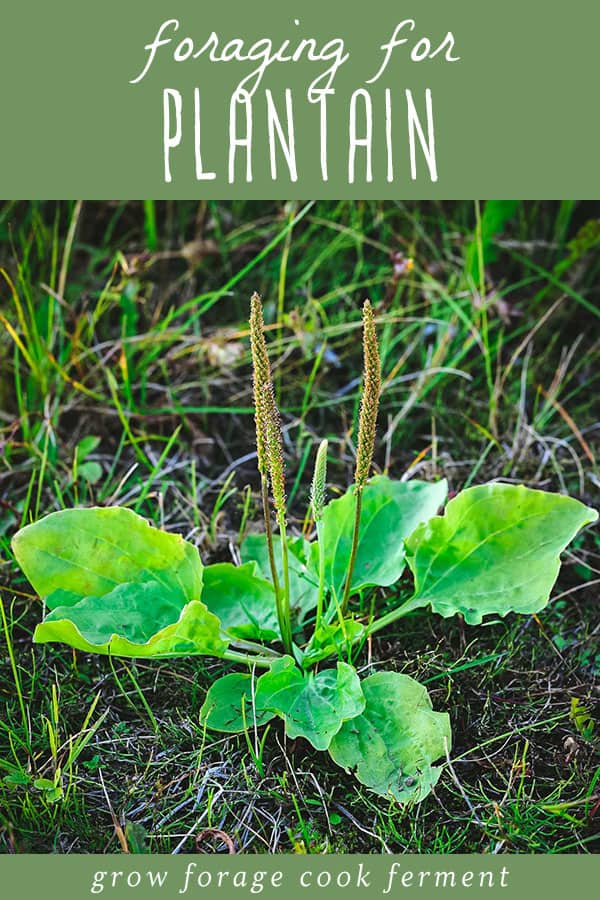
Want to save this post for later?
Wildcrafting Weeds
If you want to learn more about the edible and medicinal weeds that surround us and how to use them, check out my eBook: Wildcrafting Weeds: 20 Easy to Forage Edible and Medicinal Plants (that might be growing in your backyard)!
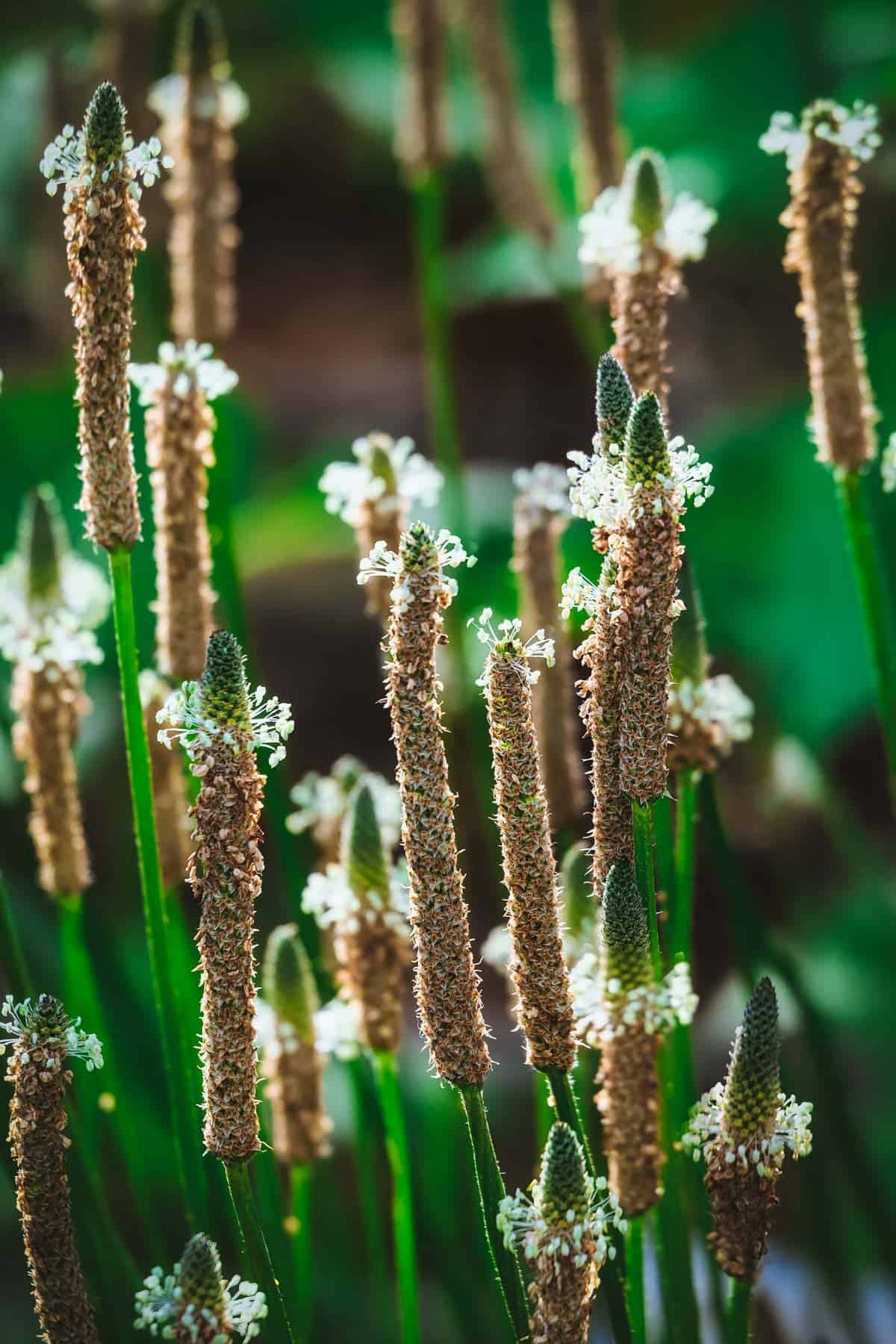
All About Plantain (Plantago)
Plantain (Plantago spp.) is native to Europe as well as northern and central Asia, but it can be found growing in the wild all over the world, probably even in your backyard. There are several different species of Plantago that grow worldwide.
You can find three main species of plantain in North America: Plantago major, Plantago Rugelii, and Plantago lanceolata (which grows in abundance in the Pacific Northwest).
Plantain is a truly hardy plant, it grows year-round in many different climates, although it will die back when exposed to harsh winters.
You can eat the leaves and the seeds of plantains, or you can use plantain for its numerous medicinal properties.
Related: 13 Early Spring Edible Wild Greens, What to Forage in Spring: 20 Edible and Medicinal Plants and Fungi
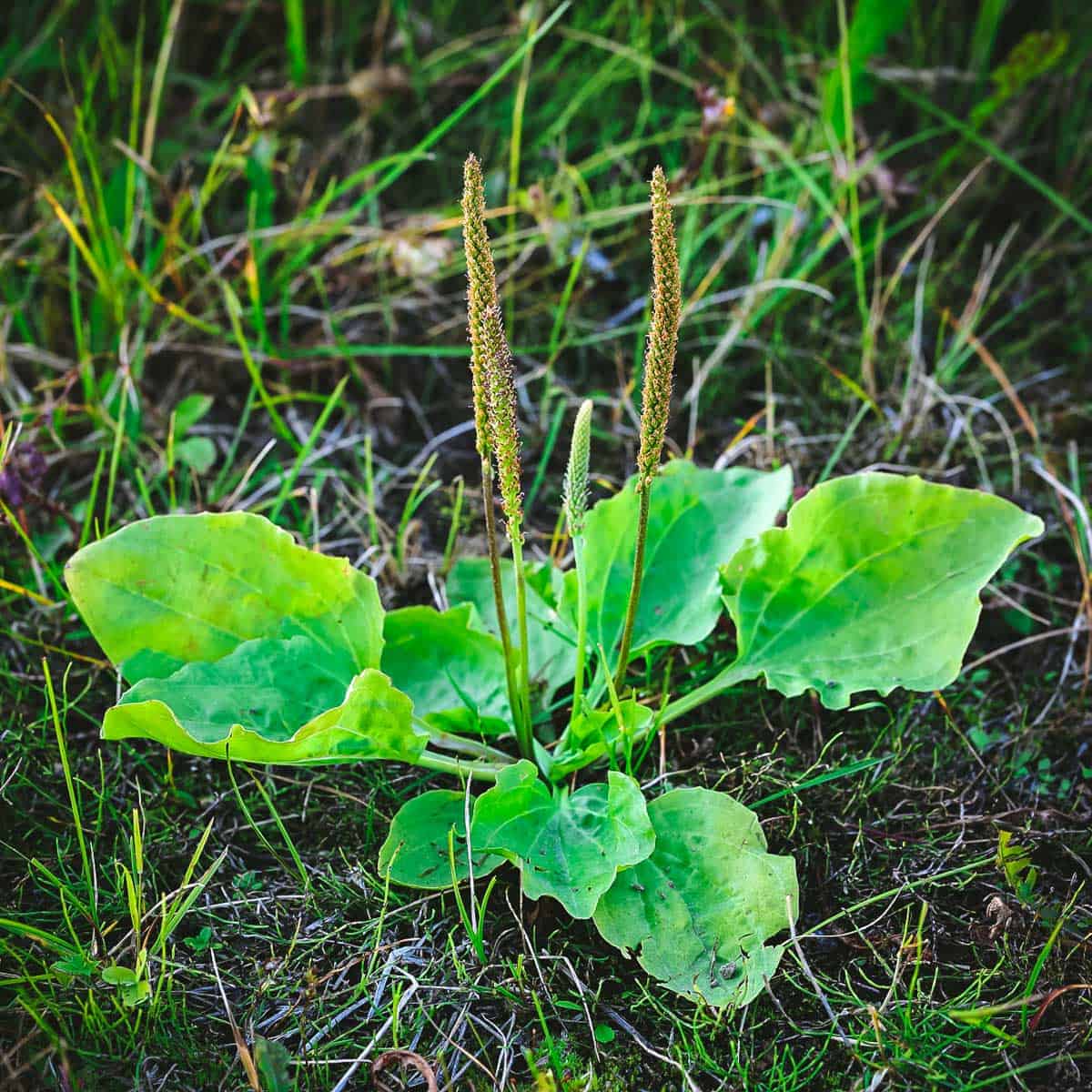
Where and When to Find Plantain
Plantain isn’t picky about where it likes to grow, and it’s found in a variety of habitats all over the world.
In fact, plantain is so common that once you identify it, you’ll wonder how you ever missed it in the first place!
Look for Plantago in yards, alongside roadsides, and in disturbed areas. Plantain grows in the shade or in the sun, so check both areas thoroughly when foraging.

Identifying Plantain
Wild plantain grows low to the ground and has distinctive leaves with prominent parallel veins. These leaves grow in a basal rosette, which means they grow at the base of the plant, the leaves overlapping to loosely form a rose-like shape.
Plantain is also identifiable by its prominent central flower spike. This spike is covered in very small flowers, each of which has four transparent petals.
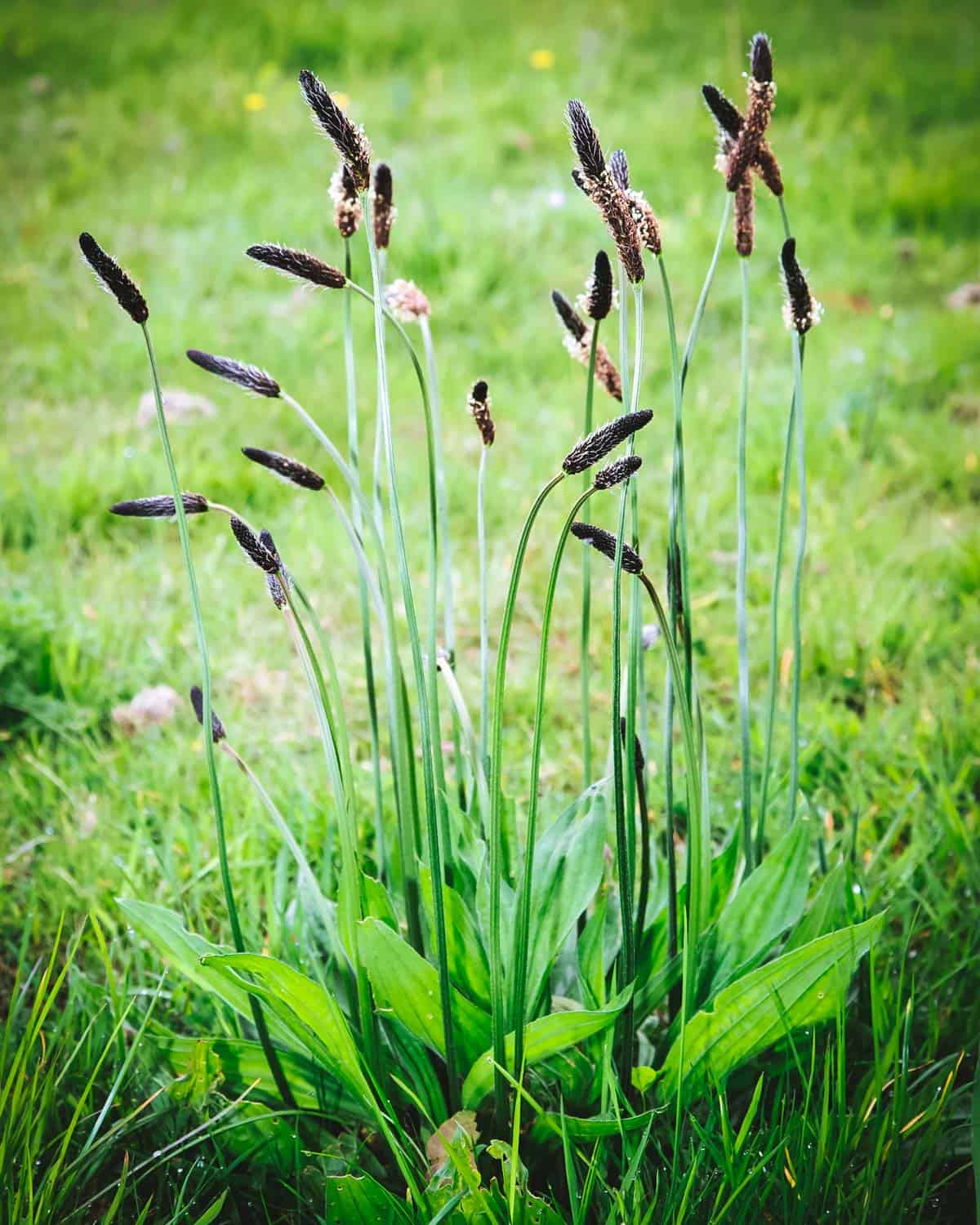
The differences between the three species of Plantago commonly found in North America are easy-to-spot, even for beginner foragers:
- Plantago major, also called broadleaf plantain, has broad, oval-shaped leaves.
- Plantago lanceolata, also called narrowleaf or ribwort plantain, has narrow, lance-like leaves that come to a point.
- Plantago rugelli, also called blackseed plantain, looks like a taller broadleaf plantain with purple where the leaf and stem meet.
I always recommend getting a foraging guidebook, especially if you are new to identifying plants. See my favorite books on foraging and wildcrafting to get started.
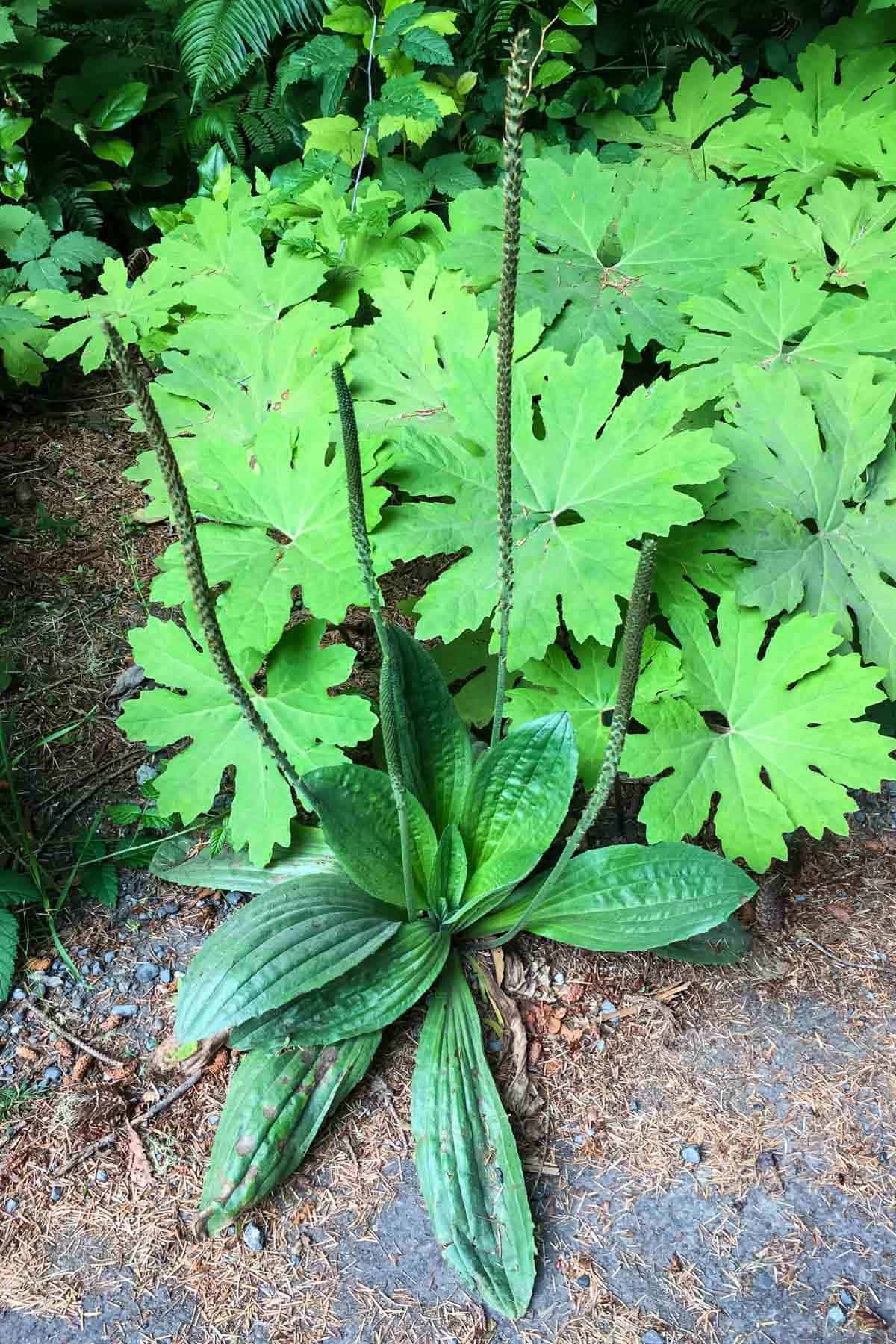
Harvesting Plantain
One of the reasons I love foraging for plantain is that it can be harvested any time during its growing season (which for some people, means all year round).
Young leaves are ideal for eating and while older leaves are still edible they become fibrous and difficult to chew.
Preserve plantain leaves by drying them — a dehydrator does a great job of getting the leaves as dry as possible for storage.
As with any foraging expedition, make sure you have permission to harvest plantain first, whether that’s from a neighbor or a park board.
Always, always make sure plantain — any other plant you’re foraging — hasn’t been sprayed with pesticides or any other poisonous chemicals.
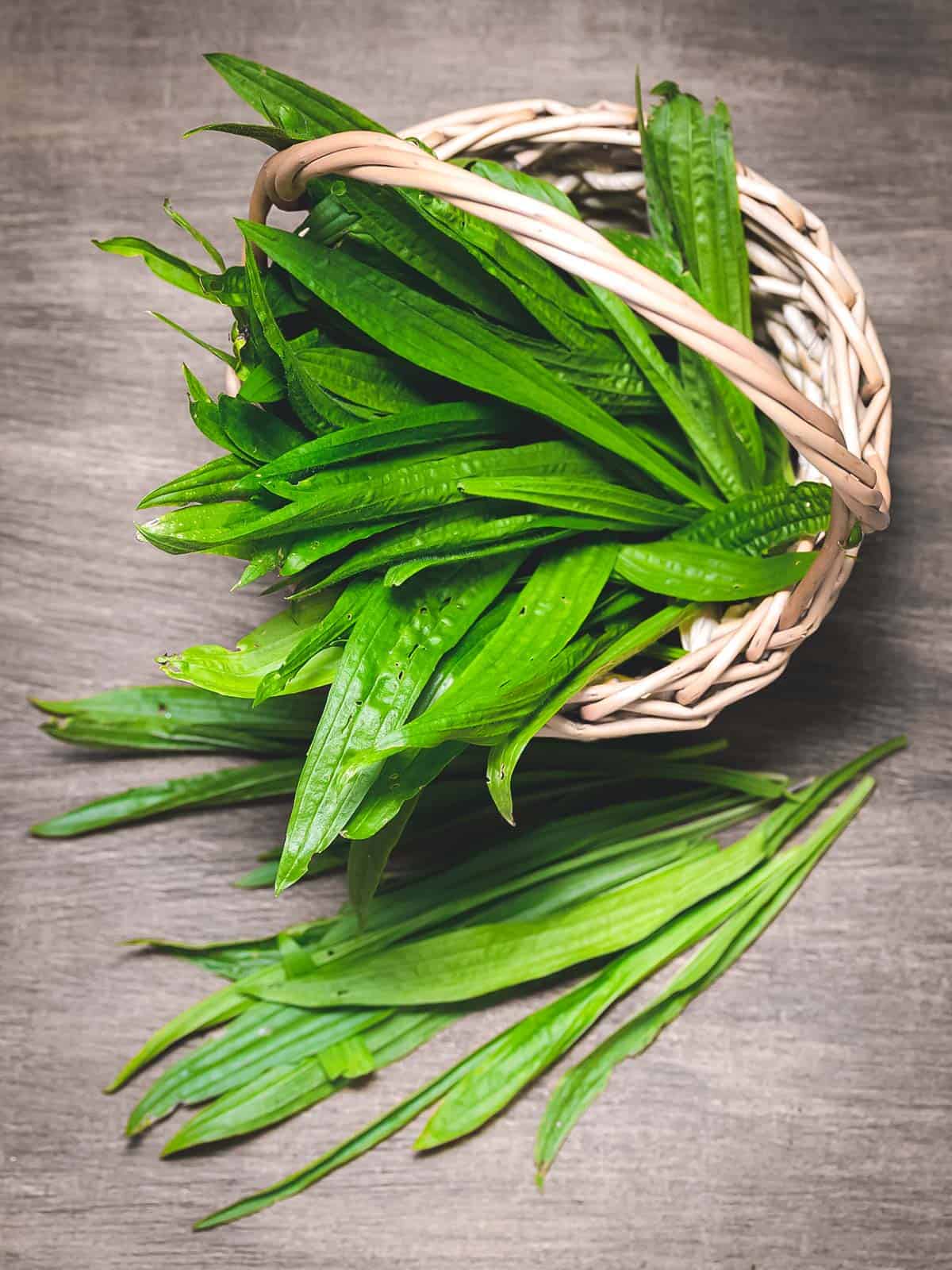
Plantain Look-alikes
Plantain has very few natural look-alikes, and the plants that do resemble Plantago are all non-toxic. Yet another reason why plantain is such a beginner-friendly plant!
Hostas, which are sometimes called plantain lilies, are similar in appearance and their leaves and shoots can also be eaten.
Edible Uses of Plantain
Like other types of wild greens, plantain leaves are super-nutritious and loaded with vitamins and minerals. Plantain leaves are high in vitamins A, C, and K, as well as being a source of iron, calcium, and magnesium.
Young plantain leaves have an earthy, slightly bitter flavor and they’re a welcome addition to soups and stews, just as you would with other dark leafy greens.
If you love snacking on kale chips, try these easy baked plantain leaf chips — this recipe would be perfect to make for a delicious snack on the trail.
Harvesting plantain seeds is labor intensive and only produces a small yield, but they can be ground into flour or left whole and sprinkled on top of salads.
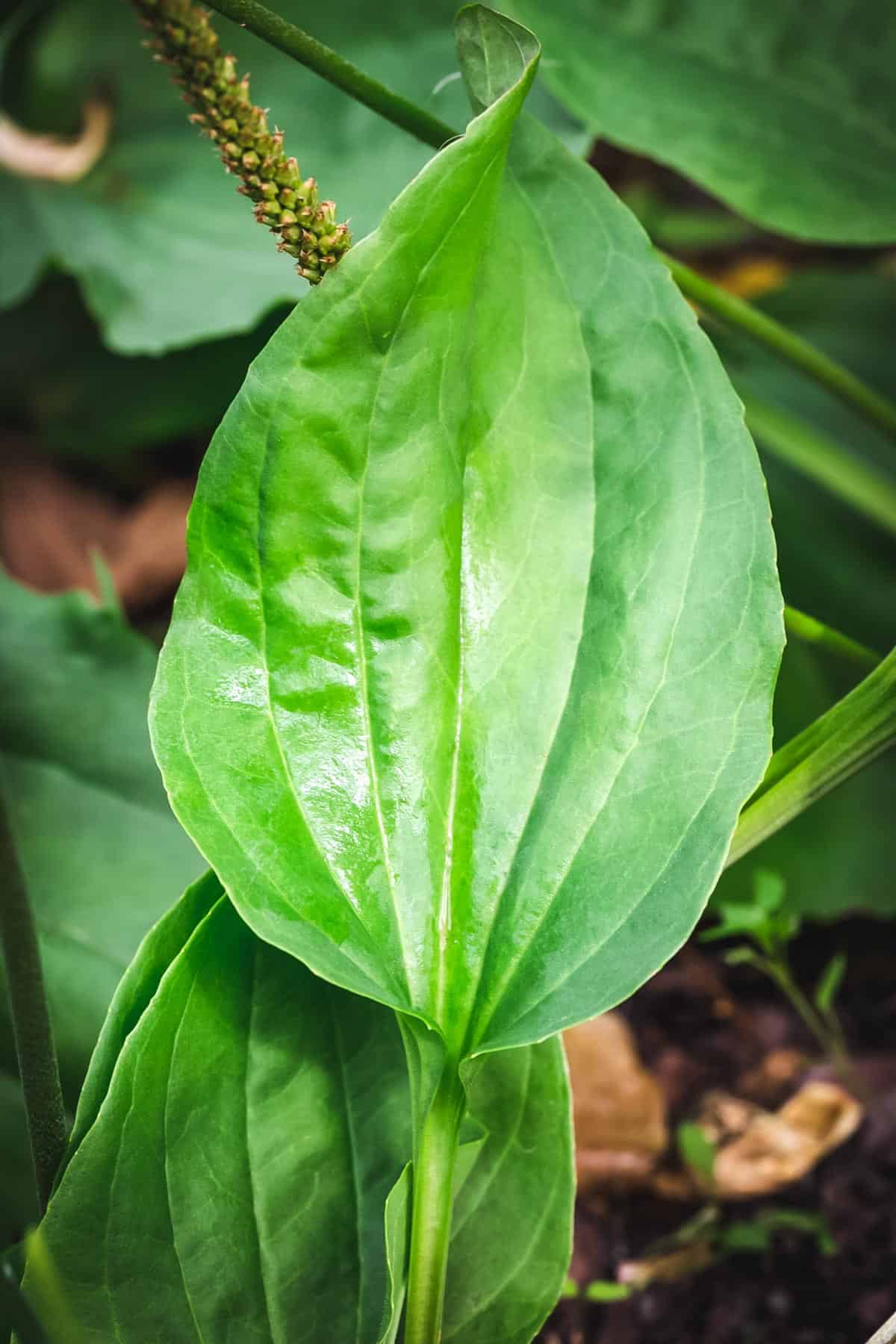
Medicinal Uses of Plantain
Plantain has a long list of healing properties. In my opinion it’s one of the best all-purpose plants to have on hand!
Because Plantago has antibacterial, antimicrobial, anti-inflammatory, and astringent properties, it can be used for a variety of common ailments.
Plantain leaves that have been partially chewed can be topically applied as a poultice for bug bites, scrapes, and rashes. It’s a good to know how to identify plantain leaves when you’re out camping, hiking, or out in the field for this reason!
Or you can go a step further and use plantain leaves to make your own natural bug bite remedy.
I use these cooling aloe plantain cubes if I’ve had too much sun. The combination of aloe and plantain blended together and then frozen provides instant relief on tender skin.
Plantain leaves are highly effective at helping to heal minor wounds, cuts, and scrapes. They are a perfect addition to homemade salves and balms such as this plantain salve or herbal healing salve.
You could also make this dreamy lavender plantain lotion (apply on dry skin just before bedtime for best results).
The outside coating of plantain seeds are called psyllium husks and, thanks to their high-fiber content, are used as a digestive aid.
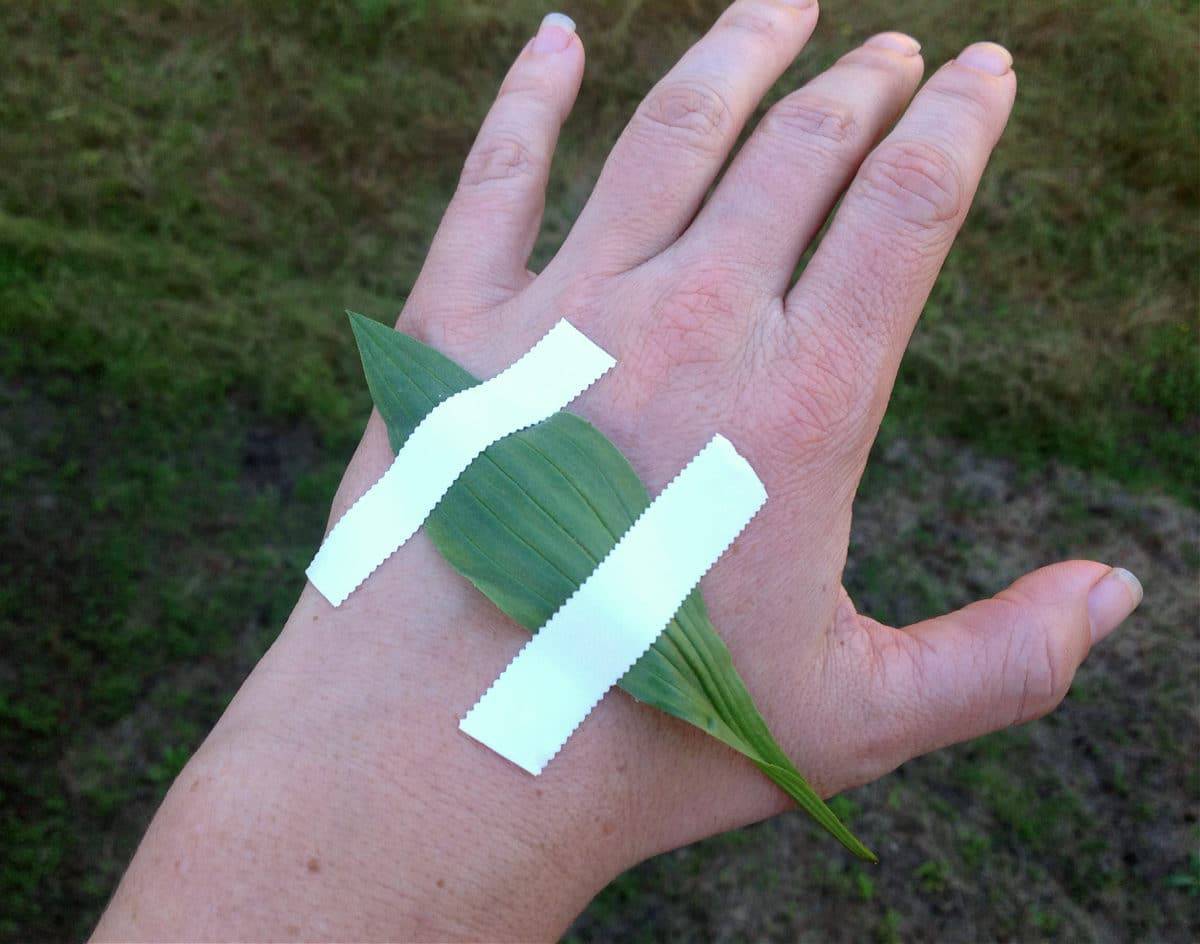
Where to buy plantain leaf
If you can’t find any plantain, or if it’s the wrong season, you can always buy dried plantain leaf from Mountain Rose Herbs (my favorite place to buy high quality, organic herbs).
For now, though, especially in spring and summer, keep your eyes open for this wonder plant! If you’re like me you’ve been looking at it ever since you were a kid, but haven’t realized the hidden medicinal properties that are within it.
This is the kind of knowledge that is getting lost through the generations. Let’s not lose it for good! I guarantee it will be important for us to know how to use plants like plantain in the future.

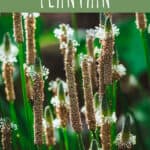
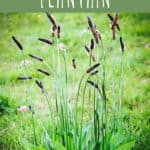
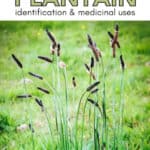
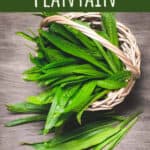
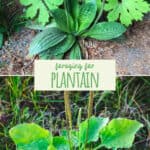
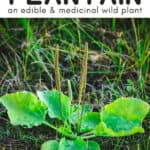
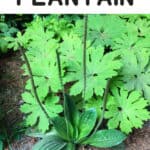
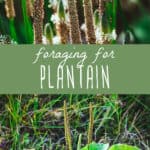

I have seen a photo of someone frying up the seed heads? There was no recipe attached but I am curious to try. it.
In Europe they make a plantain remedy that you bury in the ground in the Spring and dig up in the Fall. The consistent temp is supposed to bring the elixir together.
Happy foraging, mullein dream pillows are a favorite of mine!
Are the very young shoots (seed stems) a tasty part to saute?
Absolutely!
Great for heel blisters, pop a leaf in your sock and the blister will heal quickly.
For sore throat, chew slowly and swallow.
Is adders tongue a plantain lookalike?
Not that I’m aware of. I’m not familiar with adders tongue.
Do all three of the species you listed have the same medicinal properties? Wondering especially about P. lanceolata. Thanks!
Yup, all share similar medicinal properties!
Thank you Colleen love plantain so versatile I use itmake a pesto with walnuts and I use it to make tea daily. It seems to help my hay fever
here in the UK your broadleaf plantain is also known as Mouse Ear plantain while the narrow plantain has the less attractive nick name of Rats Tail plantain. given that its easy to identify, ediable both raw and cooked, medicanal and easlily found. it really should be better known.